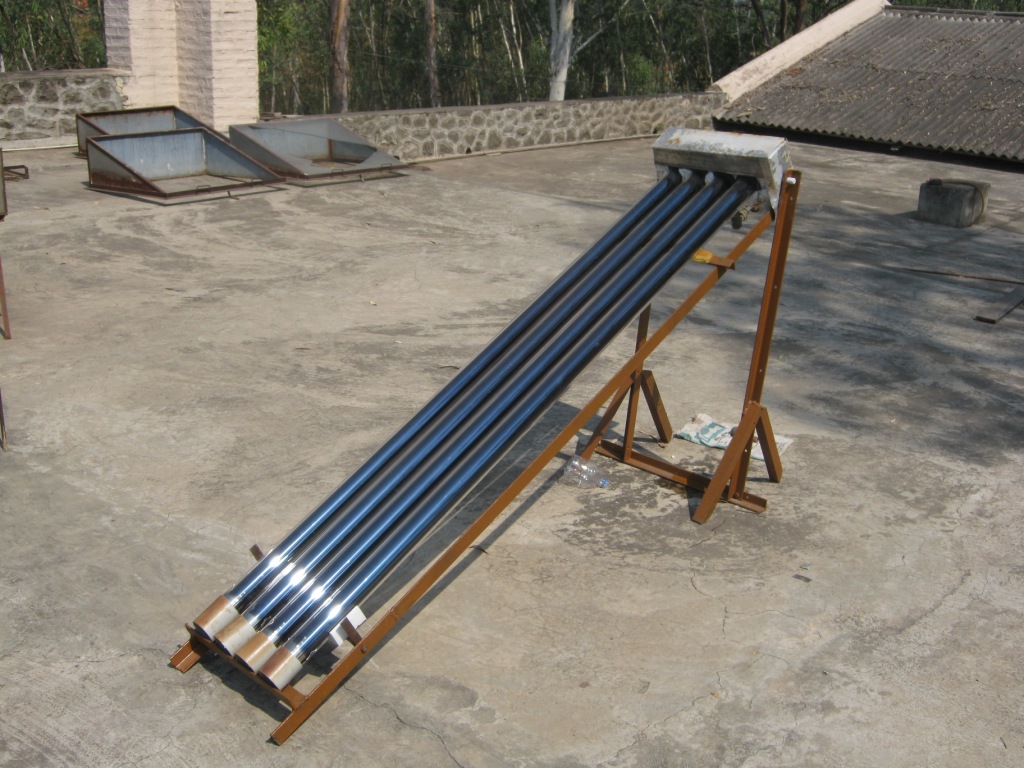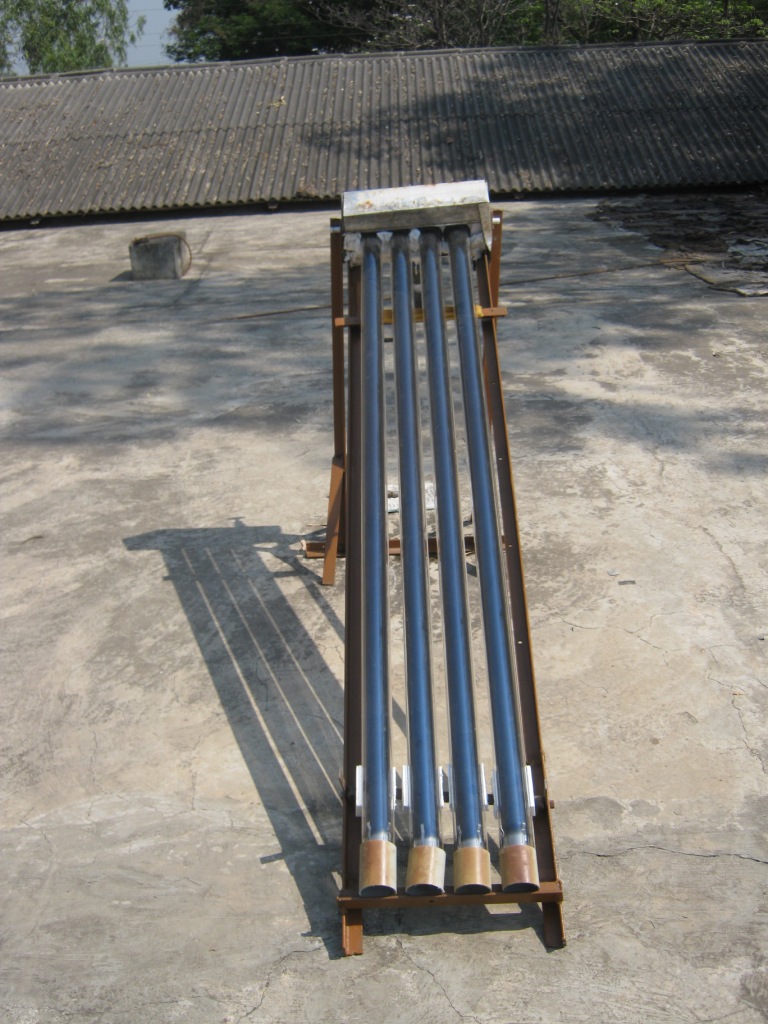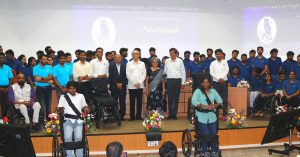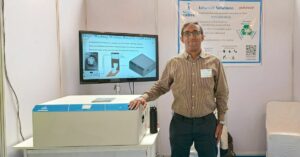An Old Saree, Glass Tubes and Sun – All you need for a revolutionary Water Purifier!
An old saree, glass tubes and solar energy is all you need for a low cost water solar purifier and heater. Here is all you need to know about the path-breaking technology that can change the landscape of rural India.

Here is all you need to know about the path-breaking technology that can provide clean drinking water to rural India for just Rs. 1500!
In earlier days, before the existence of the Aquaguards, the Kents and other expensive water purifiers, we often saw our grandmothers using a simple cotton cloth to filter the tap water and then boil it to make it ready for drinking.
Dr. Anil Rajvanshi, an Indian scientist, has brought back these traditional methods in an effective and simple way to make a low-cost solar water purifier, which could be immensely helpful for rural households. Using the knowledge that water does not need to be boiled to make it germ free, and even exposure to a lower temperature for a sufficiently long time should suffice, he has created a low cost solar water purifier using cotton cloth, glass pipes and sunlight!
The unique filter does not suffer from filter clogging and water wastage, and does not even require electricity!

Photo: mycotopia.net
The water purifier is made available by Nimbkar Agricultural Research Institute (NARI), a Phaltan, Maharashtra based NGO.
“In most other solar heaters available in the market, water only gets heated up, it is not purified. And in other systems like RO, etc, water only gets filtered but complete sterilization is still lacking. So we came up with an idea where we can both filter the water and kill germs by heating it at a low cost using solar energy,” says Dr. Rajvanshi.
Dr. Rajvanshi and his team started working on this project in 1984. But due to non-availability of a tubular collector required by the purifier, the model did not work on cloudy days. In 2012, he again started working on the idea and launched a final prototype which is being used in the Institute to provide 30 liters of potable water daily.
How does the technology work?
All you need is a discarded saree, a few glass pipes and sunlight. The solar water purifier (SWP) consists of four tubular solar water heaters attached to a manifold. The unclean water, which is filtered by the cotton cloth, is filled in the SWP and is later heated using solar energy to make it potable.
The unclean water is filtered through four-layered cotton sari cloth and then heated to 60°C for 15 minutes or 45°C for 3 hours so that all the coliforms are inactivated.

The collectors have to be very efficient to raise the water temperature above 45°C for more than 3 hours even on completely cloudy days. Tubular vacuum-based solar collectors (tube dimensions: 47 mm ID and 1.8m long) were perfect and were used in the model. The four-tubes system in the prototype can store water up to 15 litres.
“This technology avoids the use of wood to heat water, which is costly and also creates a lot of smoke,” says Dr. Rajvanshi. Every morning, water is put in the SWP and the potable water is taken out the next day.
How is it different?
“There have been many other researches done on low-cost water purifiers and heaters. But in some cases they use plastic bottles which have chances of the plastic leaching into water at high temperatures,” says Dr. Rajvanshi. “Also, these purifiers do not work in cloudy and rainy conditions.”
Other technologies, like reverse osmosis (RO) and ultraviolet (UV) based water purifiers, include filters which face clogging and necessitate their periodic replacement, and face other problems like wastage of water and unavailability of electricity in rural areas.
NARI’s SWP does not require any electricity and can be assembled easily from locally available materials.
The impact
The biggest impact of the technology is the development of a low-cost model, the know-how for which is made available for free by NARI Phaltan. Since last year, two such systems at NARI are producing around 30 litres of potable water daily for all its staff members.
The cost of setting up the SWP is just Rs. 1500 and it is so simple to create and install that anyone in rural India can fabricate it.
“We have not patented this technology so that the rural population can utilise it in an efficient way,” says Dr. Rajvanshi.

In addition to its low cost, the technology does not require any maintenance. It is so user-friendly and efficient that people from Nepal, during the recent earthquake, contacted NARI and asked them to install it there.
In the future, NARI team wants to expand the technology and reach out to more rural households. “We want to scale this technology so that at least 30,000-40,000 litres of water can be made potable daily to meet the requirements of a village,” says Dr. Rajvanshi.
When diseases caused by unclean drinking water take the lives of approximately 760,000 young children throughout the world¹, this low cost technology can prove to be a gamechanger.
“Clean drinking water is our birth right and I feel the government of the day should help ensure that everyone has access to it. I feel that all of us, individuals, NGOs and corporates, should help in this process,” Dr. Rajvanshi concludes.
To know more about NARI’s work and their remarkable SWP, contact Dr. Rajvanshi at – [email protected]
1 Data source: http://www.who.int/mediacentre/factsheets/fs330/en/
Like this story? Or have something to share? Write to us: [email protected], or connect with us on Facebook and Twitter (@thebetterindia).
This story made me
-
97
-
121
-
89
-
167
Tell Us More
We bring stories straight from the heart of India, to inspire millions and create a wave of impact. Our positive movement is growing bigger everyday, and we would love for you to join it.
Please contribute whatever you can, every little penny helps our team in bringing you more stories that support dreams and spread hope.



















